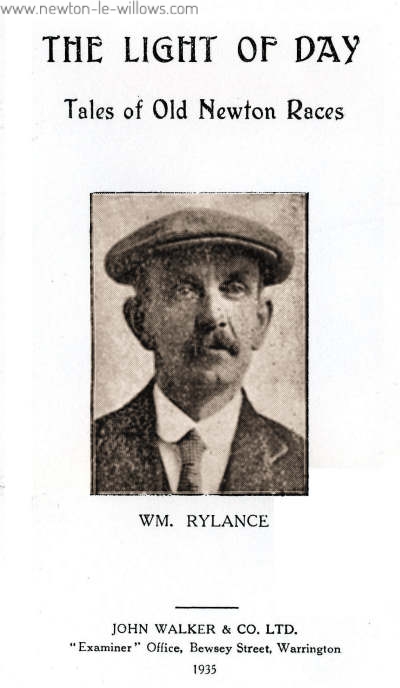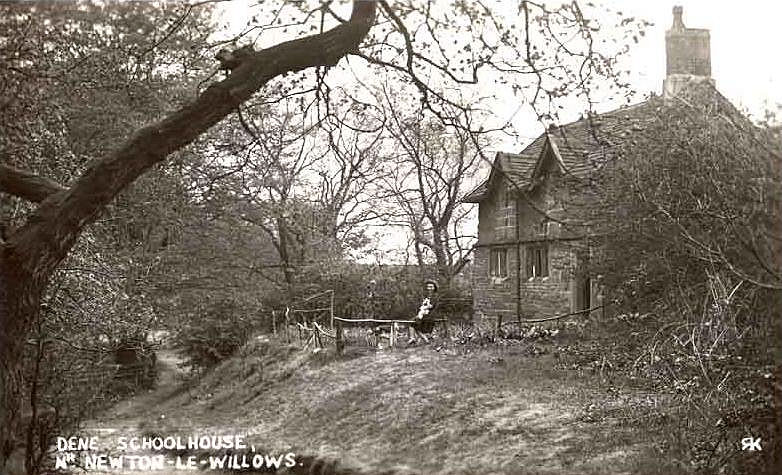THE GAMBLERS.
Along this back line from end to end the gamblers were always busy catching mugs. There is a lamp post near to the entrance of the back line, and it was here I saw the vision of the first character I am going to tell you about, before I proceed with the gamblers. This man would stand with his back to the lamp post and would allow anyone to tie him up with the length of rope which he supplied, providing they did not go above his shoulders. After being tied up he would appeal to the bystanders for coppers, before proceeding to release himself. His cap was placed on the ground in front of him to receive the money, and when he thought he had sufficient he would proceed to extricate himself. Many times have I seen this performance, and often he would say: “Another threepence, gentlemen, please, you know we all have to live.”
I once saw the same character nearly die. A big, rough chap said he would tie him so that he couldnt release himself. He tied the mans two feet together to the lamp post, then wound the rope around his body, and somehow or other, it got round his neck and he switched a knot on it like a flash. In a flash the mans tongue shot out, and he would certainly have choked if some chap hadnt cut the rope.
On another occasion, I saw a sailor tie him up, and I think he would have been there until now, if the police hadnt released him.
The first group on the back line are around a man who has a piece of cloth about eighteen inches long by nine inches wide and marked out into three parts, each of a different colour, On one is marked a large U, the other end part has an 0 on it, and the centre part has a 7 painted on it. The man has a couple of dice in a box, and while he is shaking the dice he is continually calling: “Under seven, over seven, or seven, three to) one seven. Now gentlemen back your fancy, under seven, over seven, or seven, three to one seven.” It was even money on under or over seven, but if the man threw seven and you had your bob on that number you would receive four shillings back. The gambling done on that strip of canvas was surprising, and nine bets out of ten were on number seven. The only reason I could account for that, was the odds of three to one, which, in my opinion, should have been greater, because number seven could only come up three times, that is 4-3, 5-2 and 6-1, whereas under seven could come up nine times, and also over seven.
I have seen sovereigns put on (there were no notes in these days) number seven far oftener than shillings on under seven or over seven. Not only sovereigns have I seen, but halfpennies, also; yes, the man who throws the dice was like the bookmaker, no bets too large and none too small.
We now leave him, throwing his dice and raking in the shekels as fast as he can, and see what is doing in the next group of men, only a few yards away.
THE STICK AND THE BUTTON.
“Three to one you dont knock the button off the clay.” That is the call you hear as you approach the next little group of gamblers. The man running this little concern has a stick about eight or nine inches long standing perpendicular in a piece of clay about four inches in diameter. On the top of the stick rests a shirt button. You are then given a piece of umbrella wire about six inches long. The idea is to throw the wire at the stick to knock the button off, but in doing so, the button must fall clear of the clay. It is a penny a throw, and if you knock the button clear of the clay you get fourpence. There is only one way to throw it to win, and, that is by throwing the wire in a perpendicular position. You then have a chance to hit the button. If you knock the stick down a thousand times without hitting the button, the button will surely fall on the, clay. This is really a game of skill, and I have seen many pounds won and lost at it during the many years I attended the races.



